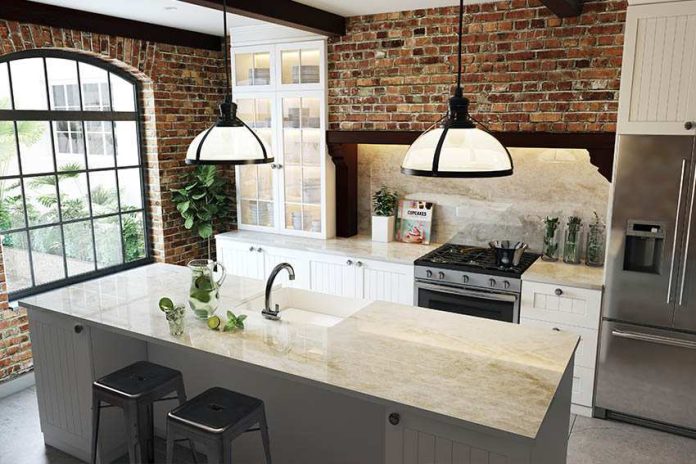
When quartz first came on the countertop market in the 60s, it was known as a durable option that featured a new-age look. Today’s savvy shopper wants a counter for their new kitchen that looks like trending granite or marble but offers a more uniform appearance and reliable performance. The Countertop Shop stocks many varieties of quartz created to mimic stone. How is that accomplished?
Quartz Begins as Natural Stone
While quartz is a manufactured product, it is largely composed of stone dust and aggregate. During the quarry process of cutting granite and quartzite from the mountain face, the leftover rubble is collected and sent to the quartz factory. Much of this dust is white or light gray. The pebbles and dust are crushed down to a uniform size and mixed with polymers, resins, and tints to create the base layer and color.
Using Robots and Computers to Create a Stunning Natural Appearance
In a collection of other mixing bins, more tints are added so that colored veining and pebbles can be introduced during the pouring process. Giant shaker machines lay down the base color. Following a computer program fed into the robotic arms, the contrast colors are dropped onto the new slab in a random pattern. Different styles of quartz may use flakes, larger stone bits, and even colored liquids to make patterns that resemble natural stone.
The slab is run through another machine that presses all the aggregate down into a nearly solid mass.
Lasers and Saws Cut Uniform Slabs
Once the slab is the desired two to three centimeters thick, a laser-guided saw is run along all the edges to create crisp, clear ends. Unlike natural stone, every quartz slab comes off the line in the exact same shape and size. Most quartz slabs arrive at our shop measuring five foot by ten foot in width and length.
While factories could produce longer slabs, the standard size is used for easier installation while lifting the countertop through doors and around hall corners.
A Curing Process Produces a Slab as Tough as Granite
Now that the slab is pressed and cut, it will be sent through a massive kiln that produces a gentle heat of 180F to 190F for about an hour. This hardens the slab while the resin permanently adheres to the stone aggregate. After it leaves the oven and cools, the quartz countertop now has similar properties of hardness as granite. After it is polished, the patterns introduced during the manufacturing process come to life.
Before you set your heart on having a marble or granite countertop, come visit the Countertop Shop Showroom out on Airport Highway in Monclova. Take some time to look at our available slabs of the different types of stone side by side. You may discover that the perfect counter for your renovation project will be one of our gorgeous quartz options.








